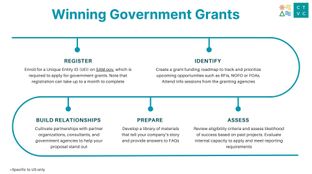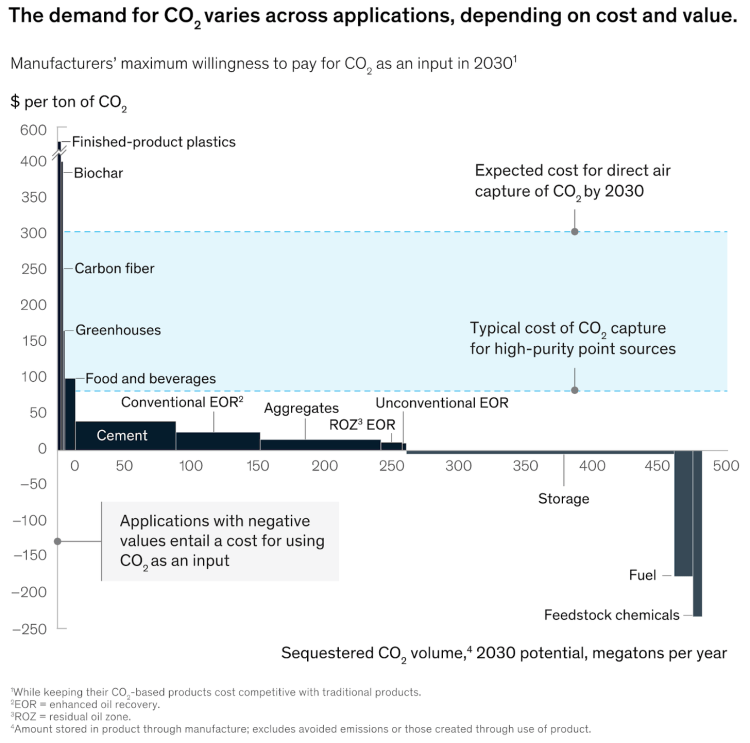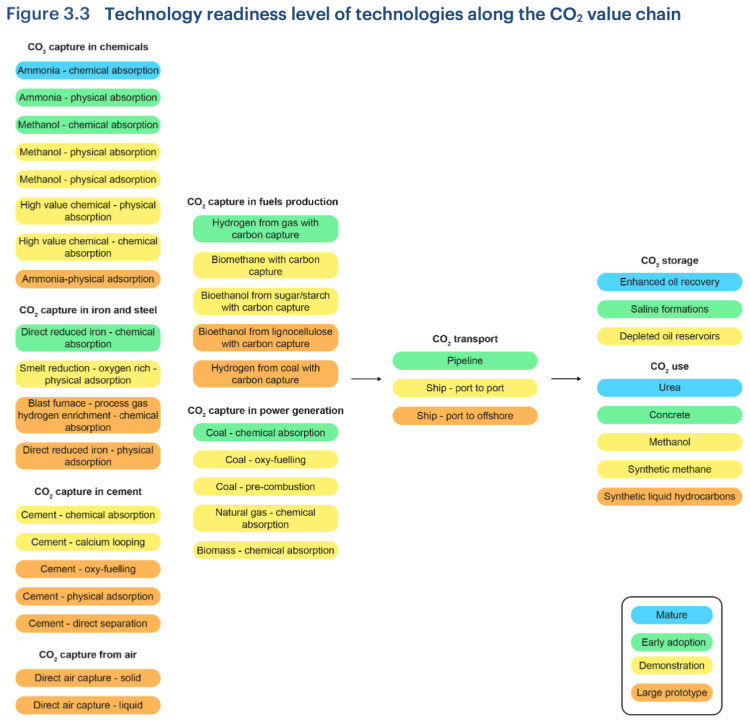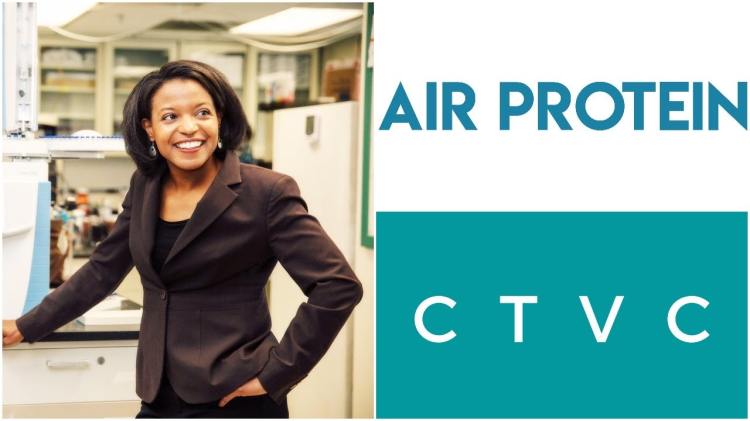
🌎 Get ready with me: Government grants edition 💅💵
A founder’s guide to winning non-dilutive funding with Elemental Excelerator
Air Protein is one such venture focused on producing sustainable protein by accessing carbon dioxide from the air and driving the frontiers of this modern alchemy.
We often talk of carbon as a nuisance, a negative dioxide externality that we accidentally produced too much of during the Industrial Era and now consciously continue to spew despite our relative climate enlightenment.
What if that nuisance could be put to use making something valuable?
The concept isn’t rocket science, but the original idea literally was. During the space program in the ’60s and ’70s, NASA rocket scientists originated an idea to convert excess carbon dioxide from respiration into nutrients for astronauts to eat. The concept didn’t get off the ground until Lisa Dyson started a company called Air Protein to commercialize the production of air-based meats. (Full true story below.)
However, this alchemy of air needn’t be extraterrestrial. In fact, there is a growing industry of businesses that, with a little ingenuity, manipulate carbon dioxide that’s been captured from the air into value-added products. We wrote a few weeks back about the Urban Future Lab, Greentown Labs, and Fraunhofer USA teaming up to form the “Carbon To Value Initiative” to help grow start-ups that have figured out how to turn CO2 into luxury goods.
The ‘value’ label need not be relegated to diamonds and vodka. As McKinsey demonstrates in yet another delightful bar mekko, there are various industrial applications of CO2 as an input into value-added materials. By McKinsey’s projections, there will be 500 megatons per year of demand by 2030. CO2 as an input remains a cost for most fuels and feedstock chemical production, but manufacturers are willing to pay (at least a little) for CO2 as an input in applications as broad and prevalent as cement, plastics, and food & beverage.
 From McKinsey’s Driving CO2 emissions to zero (and beyond) with carbon capture, use, and storage, published 6/30/2020
From McKinsey’s Driving CO2 emissions to zero (and beyond) with carbon capture, use, and storage, published 6/30/2020
Even as groups like AirMiners (a network of entrepreneurs, scientists, and engineers working to “mine” carbon from the air) and the Carbon to Value Initiative build steam, Carbon Capture Utilization and Storage (CCUS, the scientific categorization of these air alchemy technologies) remain woefully immature.
The IEA categorized over 400 separate clean energy technologies by their readiness to meet the UN’s Sustainable Development Scenario (SDS), to reach net-zero global emissions by 2070. Within CCUS, there are almost no “early adoption” or “mature” technologies that are ready for market – let alone on track to meet the SDS goals.

Vox, Many technologies needed to solve the climate crisis are nowhere near ready, 7/14/2020
The McKinsey chart and article chooses to focus on applications where manufacturers create a demand for captured CO2. They’re willing to pay for CO2 as an input, and later monetize the object of their output (e.g. better cement). Rather than separating the capture and utilization, there are emerging technologies where a little alchemy means that a commodity product (like fertilizer or even meat) captures CO2 as their input to reduce costs versus alternative inputs, have other second order benefits, and then price the output cheaper as a result.
Air Protein is one such venture focused on producing sustainable protein by accessing carbon dioxide from the air and driving the frontiers of this modern alchemy. We sat down with the MIT Physics PhD and 100 INC Female Founder, Dr. Lisa Dyson:

In feeding 10 billion people by 2050, where does Air Protein fit in?
Currently, the global agricultural system consumes a lot of resources, produces greenhouse gases, and takes up an area of land the equivalent of South America and Africa combined. Couple that inefficient process with the need to scale our food production system to feed 10 billion people, and we’ve got a serious sustainability problem. Air Protein has the ability to be the solution to that problem – it is the most environmentally sustainable way to make protein.
To produce our protein, we don’t need farmland, nor a specific geography or season. Essentially, we’ve removed conditions traditionally required for production – which positions us to address food security in communities where access to arable land is not available.
What are the inputs and process to make protein from “the air?”
It’s a bioprocess that we developed that was inspired by work done at NASA during the space program in the ’60s and ’70s. We capture excess carbon dioxide, an element of the air we breathe, and, through a process involving microbes that resembles reverse beer brewing, repurpose it as a value-added protein.
Where does Air Protein fit in the evolving (alternative) meat market?
COVID-19 has accelerated the growing interest in the largest food sector, meat, particularly in the form of alternative meats. As consumers focus on health and sustainability, the alternative meat market is forecast to expand to 40-50% share of meat consumption over the next few decades.
At Air Protein, we are reinventing meat. First, our technology is fast; Air Protein produces the protein to make a steak in 4 days, compared to the 2 years required to grow the corn and cow to make a meat steak. Second, we also focus on health and nutrition. Critics argue that the big alternative meat brands’ products aren’t so healthy; Air Protein products are built with complete proteins full of vitamins and bioavailable minerals. And thirdly, our protein ingredient is carbon negative; we use renewable energy to sequester carbon dioxide in our proteins – that traditionally grown steak that shows up on your plate definitely doesn’t.
Given the benefits of speed and nutrition, is there a price premium on your premium product?
Our goal is to democratize access to nutritious foods. Because of the favorable economics of our platform, we expect to be cost competitive at scale with the commodity meat industry.
How has Air Protein been financed to date? Any recommendations for other fundamental science ventures?
In developing this technology, we’ve benefited from US, European, and Canadian governmental funding. Likewise, our corporate partnerships and investors have been really supportive. Well beyond writing checks, they’re our advisors and team members.
I’d encourage other fundamental science entrepreneurs to research the Department of Agriculture and the Department of Energy’s funding for startups. Both organizations have grants and loans to help build manufacturing capabilities of clean tech companies. Likewise, European governments are incredibly focused on sustainability. So, I’d encourage entrepreneurs to look broadly at EU grants or loans (some of which are forgivable or zero interest), as there are lots of opportunities available outside of traditional venture capital.
What’s next for Air Protein?
We’re focused on commercialization, production scale up, and product development of this world changing technology. I’m so excited to introduce the world’s first air-based meat. We’ve already demoed our first chicken product, and will soon introduce multiple different meat alternative products that have significant sustainability impact, while delivering health and nutrition to consumers. We dream big at Air Protein and are focused on offering a significant solution to this meat challenge by creating value out of carbon.
To learn more about Air Protein, Lisa Dyson welcomes people to visit their website and to watch her popular TED Talk. Air Protein is always open to connecting with and meeting great people, particularly food scientists and product development experts., and will be ramping up staff soon.
Interested in more content like this? Subscribe to our weekly newsletter on Climate Tech below!

A founder’s guide to winning non-dilutive funding with Elemental Excelerator

Infrastructure investing for impact with Banyan Infrastructure's Amanda Li

Venturing into nature with Diego Saez-Gil at Pachama